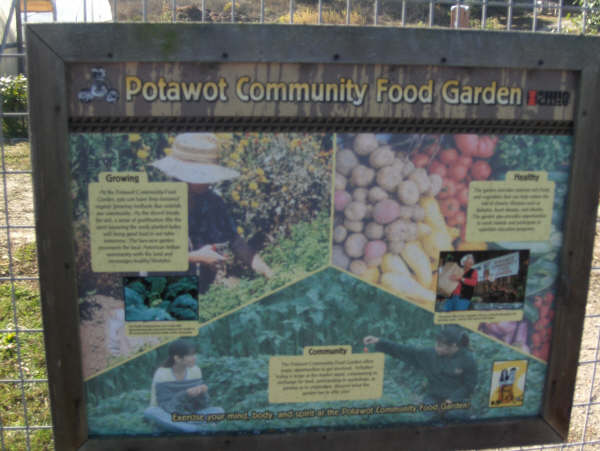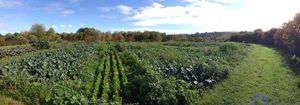No edit summary |
MeghanHeintz (talk | contribs) No edit summary |
||
| Line 1: | Line 1: | ||
== Introduction == | == Introduction == | ||
Crop Rotation is a practice in gardening in which different crops are planted in different areas of the field each year to prevent deterioration of the soil. The herb and vegetable gardens at Potawot Indian Health Facility use the method of crop rotation as a part of their organic gardening routine. | Crop Rotation is a practice in gardening in which different crops are planted in different areas of the field each year to prevent deterioration of the soil. It can improve soil fertility and structure with the right technique. The herb and vegetable gardens at Potawot Indian Health Facility use the method of crop rotation as a part of their organic gardening routine. [[Image:sign_potawot.jpg]] | ||
[[Image:sign_potawot.jpg | |||
== Why Crop Rotation is Important == | == Why Crop Rotation is Important == | ||
| Line 18: | Line 6: | ||
== Crop Rotation Techniques == | == Crop Rotation Techniques == | ||
Plants in different taxonomic groups are rotated to ward off pests. This generally means deep-rooted plants are rotated with shallow rooted plants. Also certain plants renew different nutrients i.e. legumes (like a kidney bean or vanilla) replenish nitrates in the ground and cereals need nitrate rich soil, therefore it is beneficial to plant legumes before cereals. Crop rotation techniques ultimately vary depending on the soil quality, precipitation and climate. [[Image:potawot006.jpg|thumb|right|Potawot Gardens]] | |||
[[Image:potawot006.jpg|thumb|right|Potawot Gardens]] | |||
== Crop Rotation at Potawot == | == Crop Rotation at Potawot == | ||
== References == | |||
[[Category:ENGR115 Intro to Engineering]] | |||
[[Category:Engr115 Intro to Engineering]] | [[Category:Engr115 Intro to Engineering]] | ||
[[Category:Engr115 intro to engineering]] | |||
[[Category:Greywater]] | [[Category:Greywater]] | ||
[[Category:Potawot]] | [[Category:Potawot]] | ||
[[Category:Projects]] | [[Category:Projects]] | ||
<layout name="Project" /> | <layout name="Project" /> | ||
Revision as of 02:33, 28 October 2008
Introduction
Crop Rotation is a practice in gardening in which different crops are planted in different areas of the field each year to prevent deterioration of the soil. It can improve soil fertility and structure with the right technique. The herb and vegetable gardens at Potawot Indian Health Facility use the method of crop rotation as a part of their organic gardening routine. 
Why Crop Rotation is Important
Rotating your crops is an essential part of sustainable organic gardening. Without crop rotation the soil is weakened by one crop repeatedly season after season taking out specific nutrients from the soil. Also without crop rotation specific pests and pathogens will build up in the crop growing area. With crop rotation soil weakening can be avoided by changing the crops season to season because the different crops pull out different nutrients from the soil and attract different pests and pathogens.
Crop Rotation Techniques
Plants in different taxonomic groups are rotated to ward off pests. This generally means deep-rooted plants are rotated with shallow rooted plants. Also certain plants renew different nutrients i.e. legumes (like a kidney bean or vanilla) replenish nitrates in the ground and cereals need nitrate rich soil, therefore it is beneficial to plant legumes before cereals. Crop rotation techniques ultimately vary depending on the soil quality, precipitation and climate.

Crop Rotation at Potawot
References
<layout name="Project" />